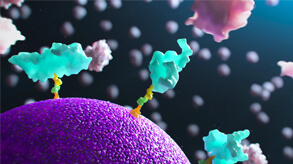Single SOMAmer Reagents
A new antibody alternative for affinity-based assays
Next-generation protein analysis with Single SOMAmer Reagents
Single SOMAmer™ Reagents (SSRs), the same high-performance reagents used in the SomaScan™ Platform, are now available as a powerful antibody alternative for singleplex affinity assays.
Ready for use in ELISA and pull-down workflows*, their small size, exceptional stability and reduced nonspecific binding make them an ideal solution when traditional antibodies fall short.
With a broad selection of nearly 11,000 reagents – that’s half the genetically encoded human proteome – SSRs are a great complement to the antibody work you’re currently doing in your research.
Want to know how?
* For research use only. Recommended for use with human samples. Single SOMAmer Reagents were designed and optimized for the SomaScan Assay.
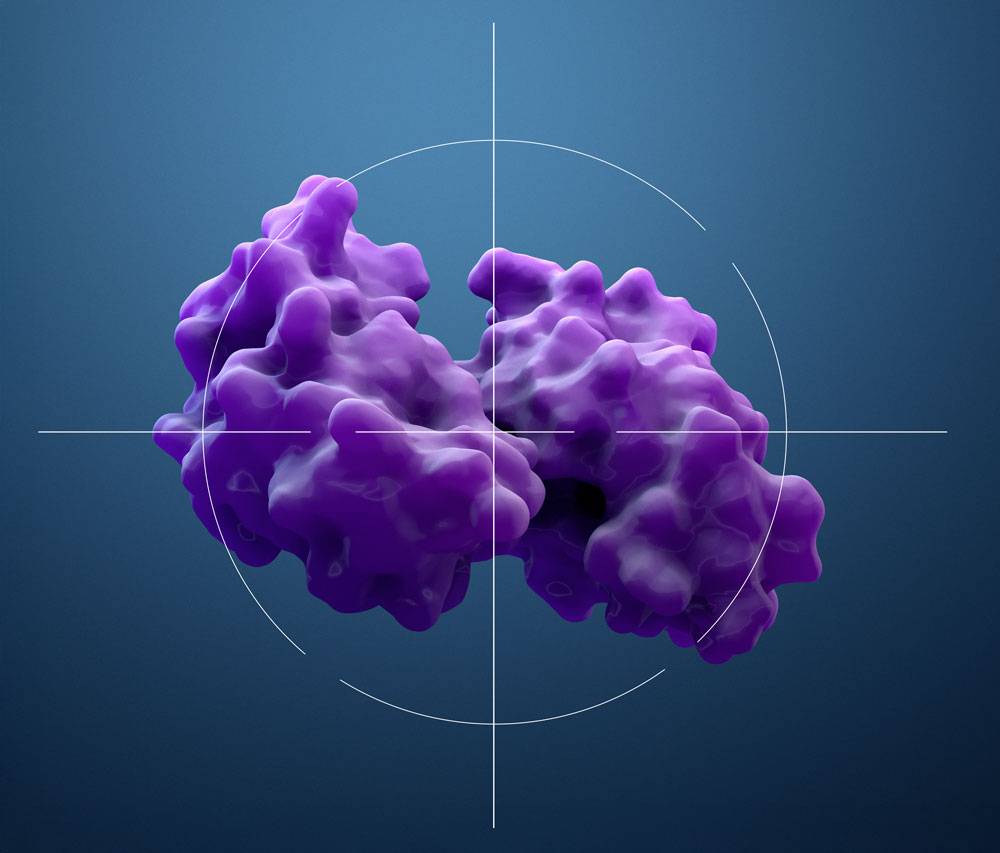
Which proteins can
Single SOMAmer Reagents detect?
Why choose Single SOMAmer Reagents for your
ELISA and mass spec work?
SSRs are next-generation protein analysis tools for affinity-based assay workflows. They offer:
Single SOMAmer Reagents in affinity assays
Single SOMAmer Reagents are engineered for use in basic singleplex affinity assay protocols, complementing your current gold-standard methods. We provide a basic protocol and guidance as a starting point for using SOMAmer Reagents in sandwich ELISA or pull-down experiments.

200 pull-down assays

1,000 ELISA wells
SSRs are advancing proteomic studies
Here’s how Single SOMAmer Reagents are already being used in published research
Ready to get started?
Frequently asked questions
What’s included in a Single SOMAmer Reagent kit?
Included:
- 1 PBDC Single SOMAmer Reagent (3 nmol, 40 μM)
- Polyanionic competitor (1 μM)
Enough material for:
- 1,000 ELISA reactions
- 200 mass spectrometry pull-downs
What is PBDC?
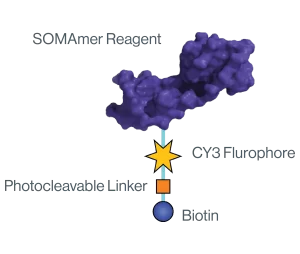
Each Single SOMAmer Reagent is pre-labeled with PBDC (photocleavable biotin-linked cyanine 3). This provides a plug-and-play reagent ready for capture, release and quantification of protein targets in affinity-based proteomic applications. No extra steps needed.
What is the purpose of a polyanionic competitor?
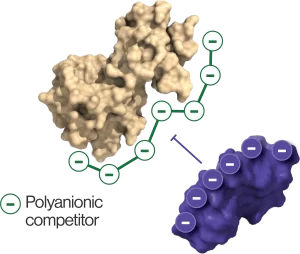
A polyanionic competitor (PAC) is included with every Single SOMAmer Reagent kit. It is a universal reagent that prevents nonspecific complexes from rebinding after UV light breaks the photocleavable linker. PAC acts on both the SOMAmer Reagents and protein to block rebinding of transient, nonspecific interactions.
What’s the difference between antibodies and aptamers?
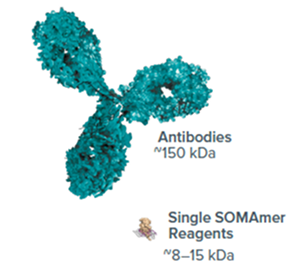
SSRs are chemically synthesized and about 10x smaller than antibodies, providing better access to challenging protein binding sites and longer-term stability.
Looking for higher-throughput screening?
Get 11,000 protein measurements with one sample
With reliable insights across a broad range of applications, the SomaScan Assay is perfect for large-scale studies and novel biomarker discovery. It’s the only proteomic approach that scales with precision.
Already using the SomaScan Assay?
Explore your results with confidence.
Use the same affinity reagents from the SomaScan Assay to complement traditional ELISA and mass spec pull-down methods, ensuring consistency and enhancing the robustness of your research. Ready to get started?
Ready to incorporate Single SOMAmer Reagents
into your research?
Tell us about your ELISA and pull-down workflows. One of our team members will be in touch to recommend the best reagents for your research and answer any questions you may have.

